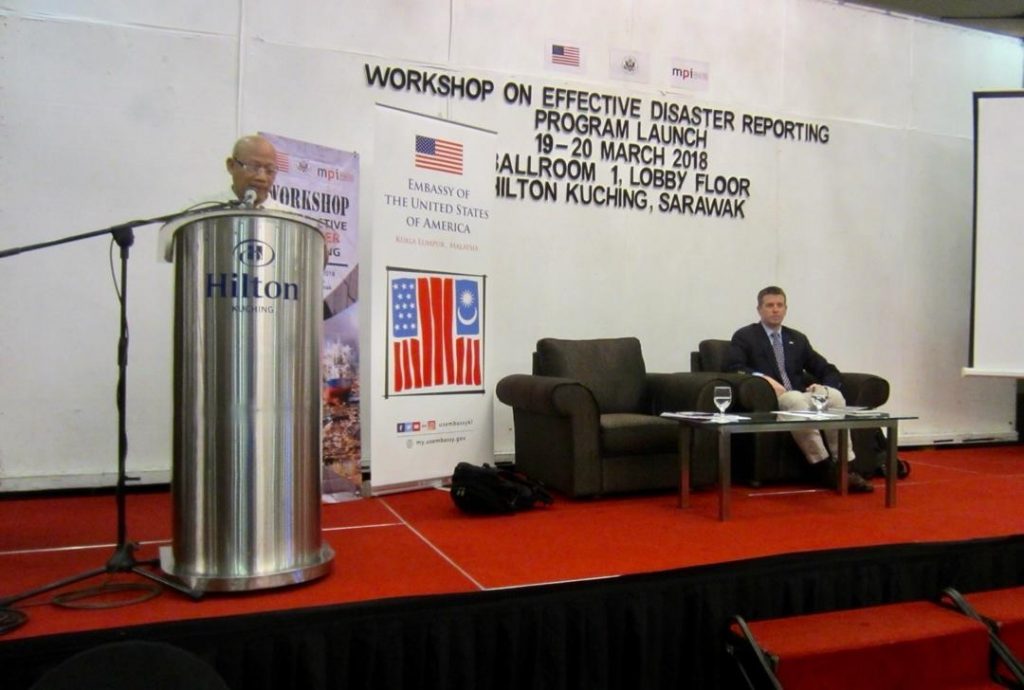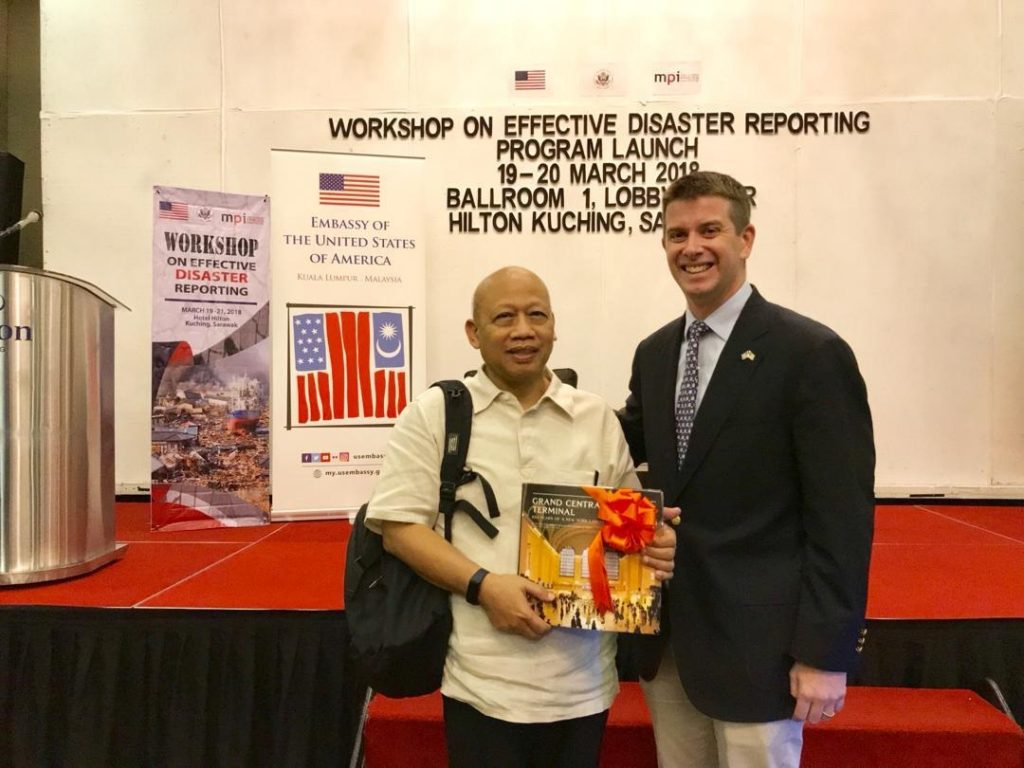Tips for reporters covering disasters
Ucapan alu-aluan Ketua Pegawai Eksekutif MPI, Datuk Dr. Chamil Wariya pada Workshop on Effective Disaster Reporting, Mac 19-21, Hotel Hilton, Kuching, Sarawak jam 9 pagi.
Assalamualaikumwarahmatullahhiwaborakatuh. A very good morning and a warm welcome to this workshop on effective disaster reporting, jointly organised by the United States Embassy in Kuala Lumpur and the Malaysian Press Institute (MPI).
First and foremost, on behalf of MPI I would like to extend MPI’s gratitude to the US Embassy, represented at this workshop this morning by its press attaché, Mr Morgan J. O’Brien III. Thank you for presence Sir and making time to launch this workshop shortly and for the generous financial support by the US Embassy to make this workshop a reality. Also, thank you to Puan Lenny Latiff, for initiating this disaster reporting workshop, few months back, prompted by a request from Sarawak Journalist Association.
Thank you also to the National Disaster Management Agency (NADMA) Kuching, Jabatan Bomba dan Penyelamat Sarawak, The Department of Veterinary Services Sarawak for their cooperation in organising this workshop.
I am happy to report that 34 journalists mainly from Sarawak and Sabah are attending this programme – the first of its kind organised by MPI, sponsored by the US Embassy. And hopefully it won’t be the last, God willing.
As stipulated in a leaflet distributed to participants, this workshop has 3 main objectives that is to expose participants on the 1) importance of relaying accurate and verified information by journalists when covering disasters; 2) to give some tips on safety to journalists when covering disasters and to establish trust; and 3) full cooperation from the relevant authorities crucial to disaster reporting.
As you know accident and disasters, be it natural or human instigated are some of the hardest stories to cover. Natural disasters like earthquakes, landslides, volcanic eruptions, floods, hurricanes, tornadoes, blizzards, tsunamis, you name it, are stories with premium news values as far as journalism is concerned. So are human made disasters such as stampedes, fires, transport accidents, plane and train crashes, industrial accidents, oil spills, and nuclear explosion/radiation. No news organisation would not want to publish such great stories especially if disasters and accidents close at home or even faraway have consequences to human suffering, loss of life, injury or other health impacts, property damage, loss of livelihoods and services, social and economic disruptions or environmental damage.
In other words, disasters which have serious disruption to the functioning of a community or society, which exceeds the ability of the affected community or society to cope using its own resources, sell newspapers and enhanced TV and radio reporting and invariably will become newspapers, TV, radio headlines for days.
But covering disaster related events require all of a reporter’s training and experience. Reporters at the scene must gather information under very difficult circumstances and produce stories on very tight deadline.
It is with this in mind that this workshop is held – to give basic insight in reporting disasters and accidents. Hopefully at the end of the two and half day program, participants will appreciate that covering disasters is not an easy task.
Disasters are stressful situation and when facing such situations, it is important for you not only to keep your cool, learn fast, take detailed notes. But you must stay close to your news sources i.e. with the officials in charge so that you can get accurate information and convey those information in the form news reports or features to your respective news organisation’s audiences. The official in charge will have the big picture overview of what’s happening and will no doubt be a valuable source to your reporting.
As man on the ground, reporters and journalists are expected to give not only official accounts, but eye witness accounts, interview with survivors, if possible, and find heroes, people who bravely and selflessly jeopardize their own safety in order to help others. Interview them. Remember disasters stories are not only about numbers – how many people were killed or injured, how much property was destroyed. Give human face to those numbers from the perspective of the survivors and eye witnesses.
Readers will want to know details of what the scene of the disaster looked like, sounded like and smelled like. Get the sights, sounds and smells in your notes. In the aftermath of a disaster there will usually be dozens of emergency responders on the scene – fire fighters, police, EMTS and so on.
And don’t ever forget this: As you do your reporting under such chaotic and stressful situation, remember what is critical to any news stories – the who, what, when, where, why and how –the five Ws and the H. Keeping those elements in mind will help to ensure that you gather all the information you need for story.
Perhaps you can learn more about tips covering accidents and natural disasters from Syed Azwan Syed Ali, former BH journalist who had spent his time covering countless disasters and conflicts at home and abroad. Mr. Morgan himself will be talking about the aftermath: Natural disaster and the role of government communicators. You will also be listening to Captain Canyon Yeamans talking about the US Military: Humanitarian and Civic Assistance Missions in the Pacific.
For local perspective of accidents and disasters, this workshop will also include field visits to Ibu Pejabat Jabatan Bomba dan Penyelamat here in Kuching and Bilik Gerakan Operasi Negeri and also a talk by Sarawak Director of Veterniry Services, Dr. Adrian Susin Ambud. Listen to them, and I am sure you will learn a thing or two that might become handy should your bosses assigned you to cover disasters and accidents in your vicinity or faraway places.
With that selamat berbengkel for the next three days. Once again thank you to each and one of you and your news organisations for participating in this workshop.
Photo Gallery


